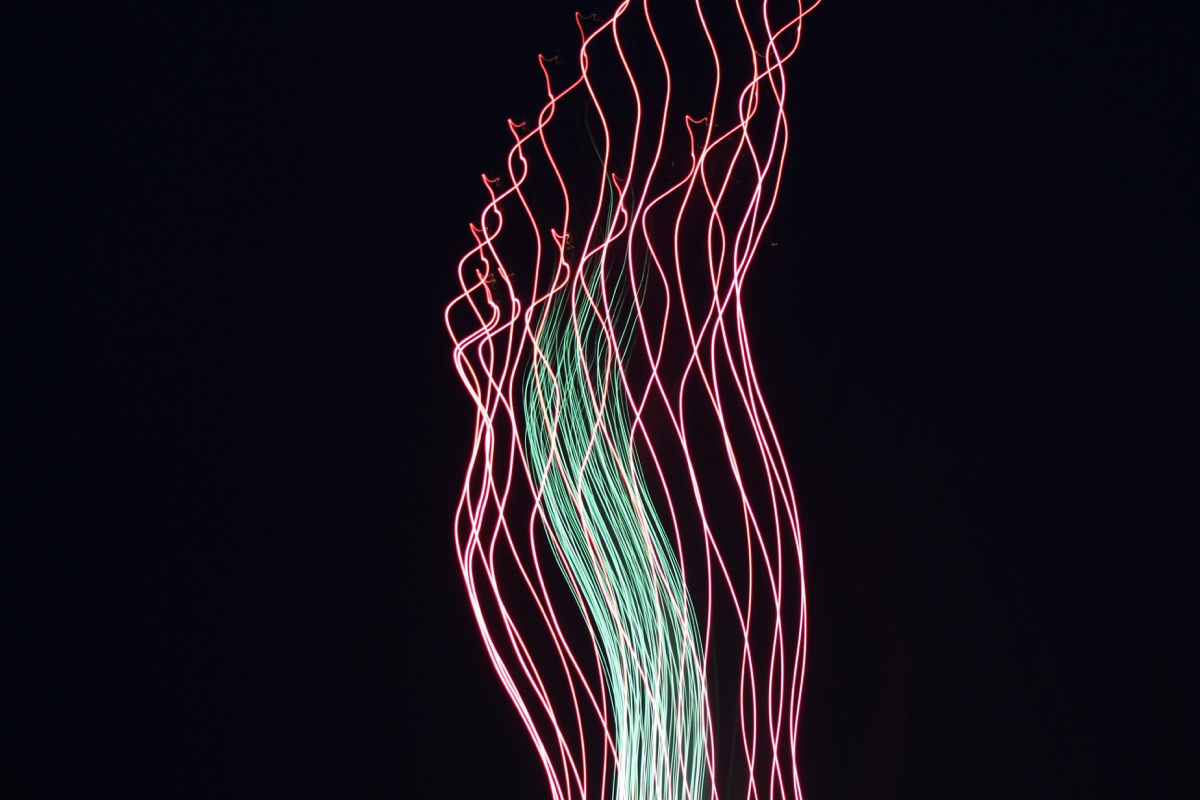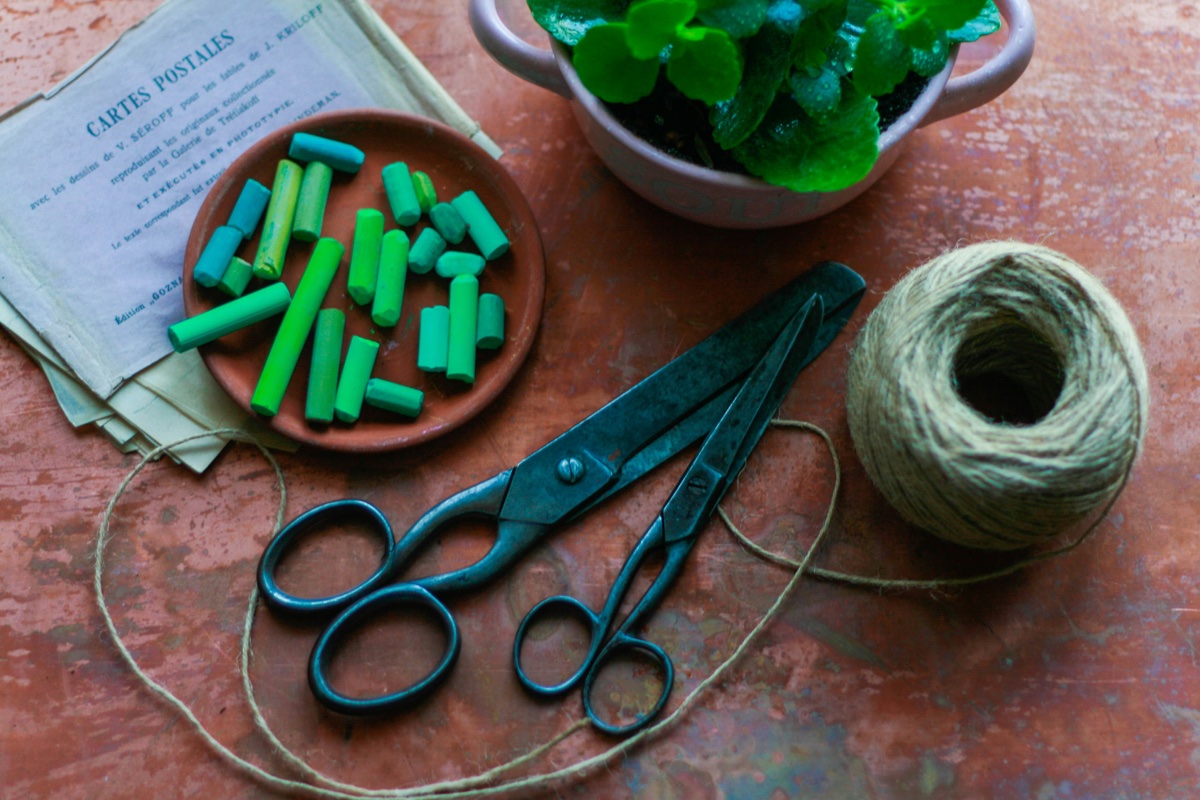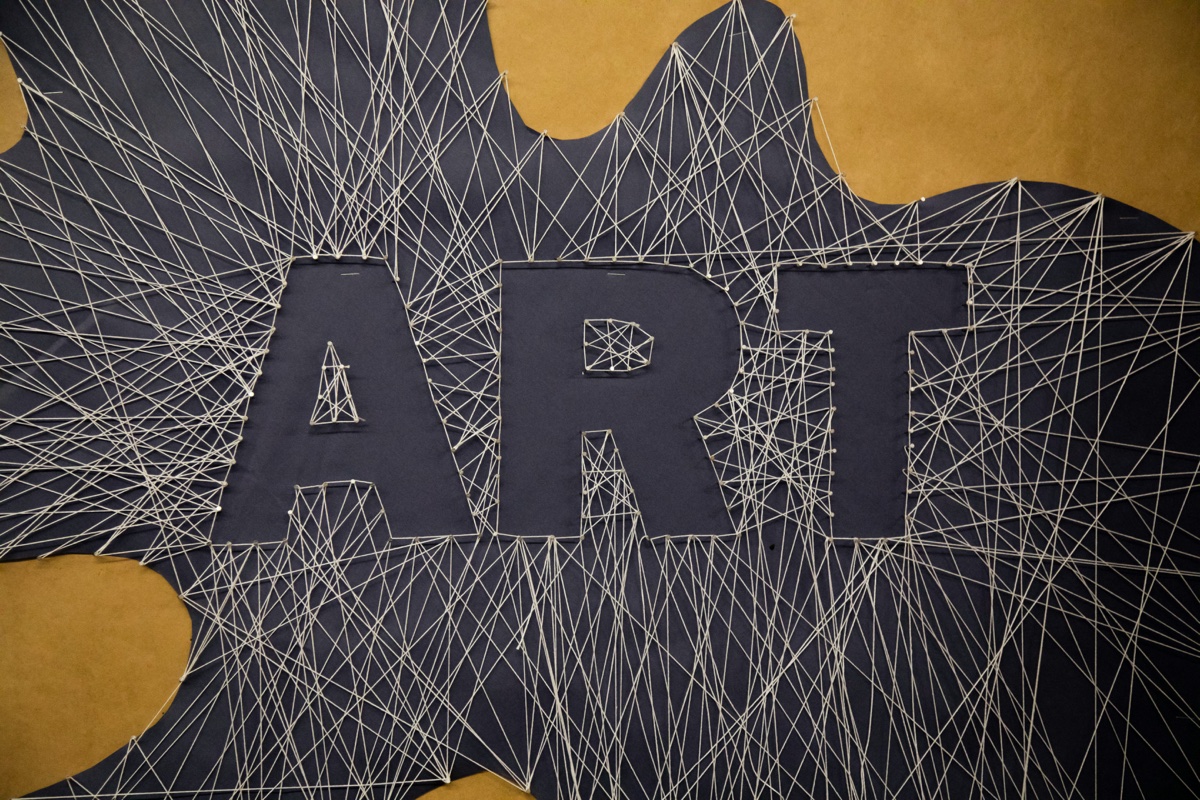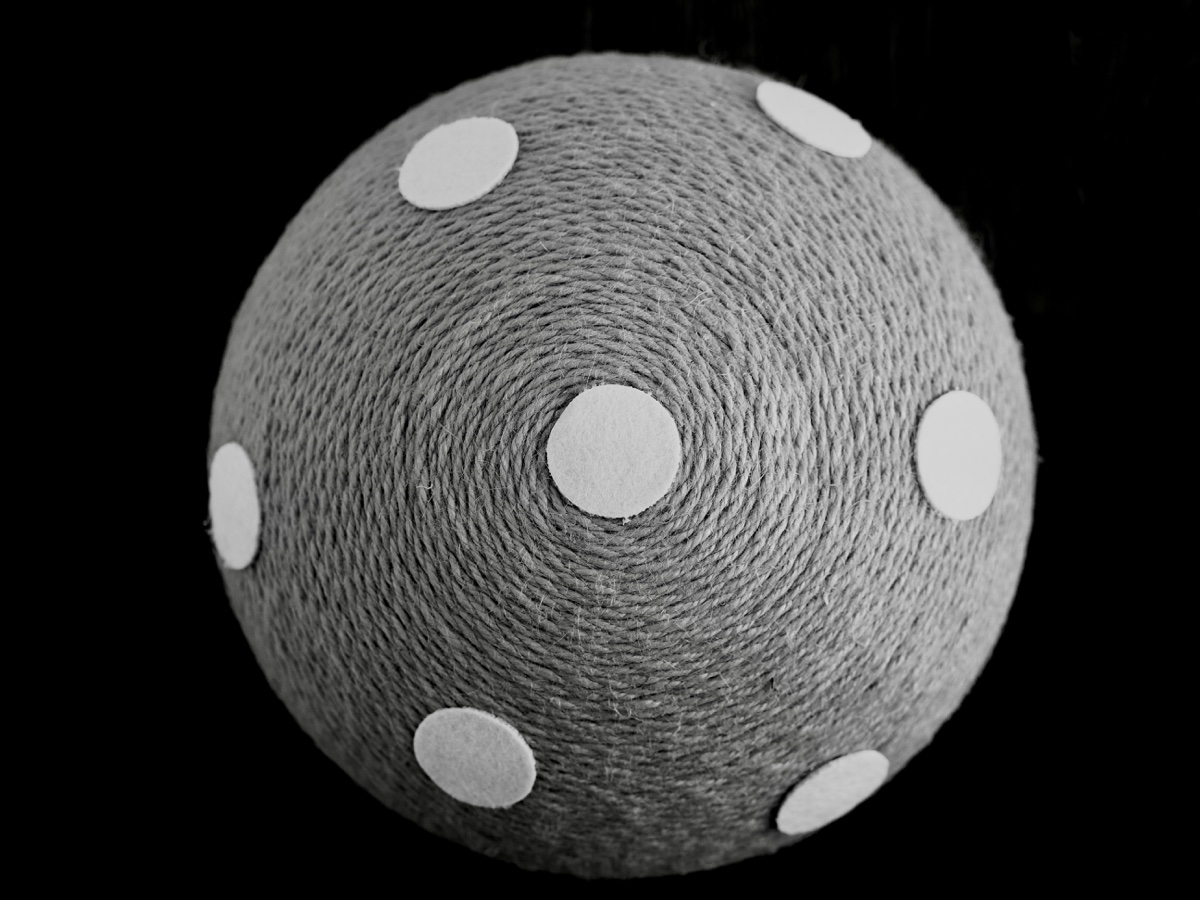Choosing the Right String
Selecting the best string for string art is crucial to achieving professional, gallery-quality results. The question "what string to use for string art" is one of the most common among beginners, and for good reason—your choice of thread dramatically affects the clarity, durability, and overall appearance of your finished piece.
The ideal string for string art should be thin enough to create clean, defined lines, strong enough to maintain consistent tension, and opaque enough to produce visible contrast against your background. Most artists prefer embroidery floss or thin crochet thread, which offer the perfect balance of these qualities.
In this comprehensive guide, we'll explore every type of string suitable for string art, compare thread weights, discuss color selection strategies, and provide specific product recommendations based on years of hands-on experience. By the end, you'll know exactly what string to use for string art projects of any complexity.
Types of String for String Art
Understanding the different materials available helps you choose the best string for string art based on your specific project needs:
Embroidery Floss
Recommended for: Beginners and detailed work
Embroidery floss is the gold standard for string art. This cotton thread consists of six loosely twisted strands that can be separated to adjust thickness. For string art, use the full six strands for maximum opacity and coverage.
Advantages: Widely available, affordable, comes in hundreds of colors, matte finish reduces glare, soft texture is gentle on hands during long sessions.
Disadvantages: Can occasionally fray if handled roughly, requires consistent tension to prevent twisting.
Best for: Portraits, detailed designs, first projects, and any artwork where color variety is important.
Crochet Thread
Recommended for: Large projects and durability
Crochet thread (size 10 or 20) is a tightly twisted cotton thread that's stronger and more uniform than embroidery floss. Size 10 is slightly thicker and more visible, while size 20 is finer for extremely detailed work.
Advantages: Extremely strong, doesn't fray, maintains consistent thickness, available on large spools, excellent for projects requiring thousands of lines.
Disadvantages: Limited color selection compared to embroidery floss, can have a slight sheen that reflects light.
Best for: Large-scale installations, outdoor string art, projects requiring maximum durability.
Craft String and Twine
Recommended for: Rustic or decorative styles
Thicker cotton or jute string creates a bold, rustic aesthetic. This isn't suitable for detailed portraits but works beautifully for geometric designs, names, quotes, or decorative pieces.
Advantages: Creates dramatic visual impact, faster to work with, excellent for beginners learning technique.
Disadvantages: Too thick for detailed work, limited color options, less precise line definition.
Best for: Geometric patterns, text-based designs, farmhouse-style decor, children's projects.
Specialty Threads
Recommended for: Experimental or unique effects
Specialty options include metallic thread, silk thread, and glow-in-the-dark string. These create unique visual effects but require more experience to work with effectively.
Metallic thread: Adds sparkle and dimension but can be difficult to maintain tension and may tangle easily.
Silk thread: Produces an elegant, lustrous finish but is expensive and delicate.
Glow-in-the-dark: Creates stunning effects in low light but is thicker and harder to work with.
Pro Tip: Starting Material
For your first string art project, use DMC embroidery floss in black on a white background (or white on black). This combination offers maximum contrast, is forgiving of minor mistakes, and lets you focus on learning technique rather than wrestling with difficult materials.
Thread Weight and Thickness Guide
Thread weight significantly impacts the final appearance of your string art. Here's how different thicknesses compare:
Ultra-Fine (Crochet Thread Size 30-40)
Thickness: 0.15-0.20mm | Use Case: Extremely detailed miniatures
Very difficult to see and work with. Only recommended for expert-level projects requiring thousands of lines in a small space. Creates the finest possible detail but is time-consuming and requires excellent lighting.
Fine (Crochet Thread Size 20)
Thickness: 0.25-0.30mm | Use Case: Highly detailed portraits
Produces exceptional detail with clean, crisp lines. Ideal for complex portraits with subtle gradations. Requires patience but yields professional results. This is the preferred weight for serious string artists.
Medium (Embroidery Floss, Crochet Thread Size 10)
Thickness: 0.35-0.45mm | Use Case: Standard string art projects
The sweet spot for most string art. Embroidery floss (six strands) and size 10 crochet thread fall into this range. Offers excellent visibility while still creating detailed images. This is what most beginners should start with.
Thick (Craft String, Thin Twine)
Thickness: 0.8-2.0mm | Use Case: Geometric or decorative designs
Creates bold, visible lines perfect for geometric patterns, text, or large-scale installations. Not suitable for detailed portraits or subtle gradients. Works well for rustic or modern minimalist aesthetics.
Pro Tip: Testing Thickness
Before committing to a full project, create a small test section with 20-30 pins and 50-100 lines. This shows you exactly how the thread thickness appears at the viewing distance you intend. What looks too thin up close may be perfect from three feet away.
Color Selection Guide
Choosing the right color combination is as important as selecting the best string for string art. Here's how to make strategic color decisions:
Black String on White Background
Contrast Level: Maximum | Best for: Detailed portraits and photorealistic work
This classic combination provides the highest possible contrast, making it ideal for reproducing photographs and complex images. Black thread is highly opaque and creates darker tones quickly with fewer overlapping lines. This is the most popular choice among professional string artists.
Tip: Use matte black thread rather than glossy to reduce light reflection and increase visibility of fine details.
White String on Black Background
Contrast Level: Maximum | Best for: Bold graphics and modern aesthetics
The inverse of the classic combination creates a dramatic, contemporary look. White thread on black tends to glow slightly and creates an ethereal quality. Particularly effective for silhouettes, profiles, and high-contrast images.
Tip: White thread may require more overlapping lines to achieve the same opacity as black since it can appear slightly translucent.
Colored String Options
Single Color: Medium contrast | Best for: Artistic expression and specific themes
Using colored thread (red, blue, gold, etc.) on a contrasting background adds personality to your work. Deep, saturated colors (navy, burgundy, forest green) work better than light or pastel shades, which may lack sufficient contrast.
Matching theme colors: Blue thread for ocean scenes, red for hearts or roses, gold for luxury or vintage aesthetics.
Multi-Color String Art
Contrast Level: Variable | Best for: Experimental and decorative pieces
Using multiple thread colors in a single piece creates unique effects but requires careful planning. You can either separate the design into distinct color zones or layer different colors strategically.
Warning: Multi-color work significantly increases complexity and project time. Master single-color techniques before attempting this.
Color Contrast Is Critical
Never use thread and background colors that are too similar in value. Even if the hues are different (like yellow thread on white), low contrast makes the image nearly invisible. When in doubt, photograph your color combination in black and white—if you can barely see the thread, the contrast is insufficient.
Best Brands and Recommendations
After testing dozens of threads from various manufacturers, these brands consistently deliver the best string for string art:
DMC Embroidery Floss
Type: Six-strand cotton embroidery floss | Price: Budget-friendly
DMC is the industry standard for embroidery floss, offering 500+ colors with excellent consistency between dye lots. Each skein provides 8 meters of thread—enough for 200-300 lines depending on your board size.
Why it's best: Reliable quality, colorfast, doesn't fray easily, universally available at craft stores worldwide, affordable for beginners.
Recommended colors: DMC 310 (black) for dark thread, DMC Blanc (white) for light thread.
Quantity needed: Budget 15-20 skeins for a medium-complexity portrait with 2,000 lines.
Coats & Clark Aunt Lydia's Crochet Thread
Type: Size 10 cotton crochet thread | Price: Mid-range
This professional-grade crochet thread comes on 350-yard spools, providing excellent value for large projects. The tightly twisted construction prevents fraying and maintains consistent thickness.
Why it's best: Exceptional strength, perfect for projects requiring 3,000+ lines, excellent durability, smooth texture won't damage hands.
Recommended colors: Black (color 12) or White (color 1) for maximum contrast.
Quantity needed: One spool typically covers a complete medium-sized portrait.
Gutermann Extra Strong Thread
Type: Polyester sewing thread | Price: Mid-range
Originally designed for heavy-duty sewing, Gutermann's extra strong thread works beautifully for string art. It's extremely fine yet incredibly durable, with a slight sheen that can create interesting light effects.
Why it's best: Unmatched strength-to-thickness ratio, won't stretch or sag over time, excellent for pieces that will be handled or shipped.
Note: The slight sheen may not suit everyone's aesthetic preference. Test before committing to large projects.
Budget Option: Craft Smart Embroidery Floss
Type: Six-strand cotton embroidery floss | Price: Very affordable
Available at craft stores like Michaels, this house brand offers acceptable quality at a fraction of DMC's cost. While not as consistent in texture, it works well for practice projects or when budget is the primary concern.
Trade-offs: Slightly more prone to fraying, color selection is limited, may have minor thickness variations within skeins.
Premium Option: Anchor Embroidery Floss
Type: Six-strand cotton embroidery floss | Price: Premium
Anchor competes directly with DMC and many artists find it slightly softer with more vibrant colors. The premium price is justified for important pieces or commissioned work.
Why splurge: Exceptional color saturation, slightly more twist than DMC which reduces tangling, luxury feel for special projects.
Pro Tip: Buying in Bulk
If you plan to create multiple string art pieces, buy thread in bulk. Many online retailers offer 50 or 100-skein boxes of single colors at significant discounts. For black DMC 310 floss (the most popular string art color), bulk purchasing can reduce per-skein cost by 40-60%.
Where to Buy String
Finding the best string for string art is easy once you know where to look:
Craft Stores (In-Person)
Michaels, Joann, Hobby Lobby, AC Moore
Pros: Immediate availability, can see and feel thread before buying, frequent sales and coupons, staff can answer basic questions.
Cons: Higher regular prices, limited stock of popular colors, may need to visit multiple locations for bulk quantities.
Tip: Sign up for store email lists to receive 40-50% off coupons, which can make in-store prices competitive with online retailers.
Online Craft Retailers
Amazon, CreateForLess.com, 123Stitch.com
Pros: Competitive pricing, full color selection, bulk options available, convenient home delivery, customer reviews provide quality feedback.
Cons: Can't examine thread in person, shipping time delays project start, minimum purchase requirements for free shipping.
Best for: Bulk orders, hard-to-find colors, comparing brands side-by-side.
Specialty Needlework Stores
Local needlework shops, DMC authorized retailers
Pros: Expert staff knowledge, highest quality materials, specialized threads not found elsewhere, often support local business.
Cons: Premium pricing, may have limited hours, fewer locations than big box craft stores.
Best for: Advice on specialty threads, color matching, building relationships with knowledgeable staff.
Wholesale and Bulk Suppliers
Alibaba, DHGate (for serious volume)
Pros: Dramatically lower prices for large quantities, good for string art businesses or teaching workshops.
Cons: Quality varies by supplier, long shipping times, minimum order quantities can be very large, harder to return if unsatisfied.
Best for: Professional string artists creating dozens of pieces, workshop instructors buying for classes.
Budget vs Premium Options
Understanding when to save money and when to invest in quality helps you make smart purchasing decisions:
Budget Approach (Under $15 per project)
Thread choice: Store-brand embroidery floss or basic crochet thread
Where to buy: Michaels/Joann with 40% off coupon, or Amazon basics
Best for: Learning and practice, gifts for friends, experimenting with techniques, projects where durability isn't critical
Expected quality: Good enough for most purposes, may have minor imperfections, colors might fade slightly over years
Cost example: 20 skeins of Craft Smart floss at $0.50 per skein with coupon = $10 total
Mid-Range Approach ($20-40 per project)
Thread choice: DMC embroidery floss or Coats & Clark crochet thread
Where to buy: Online retailers, craft store bulk packs during sales
Best for: Personal artwork for your home, gifts for important occasions, small business selling string art
Expected quality: Excellent consistency, vibrant colors, will last for decades with proper care
Cost example: 20 skeins of DMC floss at $1.50 per skein = $30, or one $25 spool of quality crochet thread
Premium Approach ($50+ per project)
Thread choice: Anchor embroidery floss, silk thread, or specialty metallic threads
Where to buy: Specialty needlework stores, authorized brand retailers
Best for: Commissioned artwork, gallery pieces, heirloom gifts, competition entries
Expected quality: Exceptional in every way, archival quality, superior color saturation, luxury feel
Cost example: 25 skeins of Anchor floss at $2+ per skein, or specialty threads ranging $40-100+
When to Splurge on Premium String
- Commissioned work: Clients deserve the best quality for their money
- Large-scale pieces: Investment of time justifies premium materials
- Archival pieces: Artwork intended to last generations needs colorfast, durable thread
- Gifts for significant occasions: Weddings, anniversaries, milestone birthdays warrant premium quality
- Your own skill is advanced: Premium materials let expert technique shine
When Budget Options Are Fine
- Learning projects: Practice doesn't require premium materials
- Testing new techniques: Experiment affordably before perfecting your approach
- Children's projects: Focus on fun and learning rather than archival quality
- High-volume production: Making dozens of similar pieces for craft fairs or fundraisers
- Temporary displays: Short-term installations or event decorations
Pro Tip: Cost Per Project Calculator
A typical medium-detail portrait (16-inch board, 2,000 lines) uses approximately 600-800 feet of thread. One DMC skein has 26 feet, so you need about 25-30 skeins. At $1.50 per skein, that's $37-45 for thread alone. Budget accordingly based on your project's complexity.
Frequently Asked Questions
What is the best string for string art?
For most string art projects, DMC embroidery floss or size 10 crochet thread offers the best balance of visibility, durability, and ease of use. Embroidery floss is ideal for beginners due to its wide availability and color selection, while crochet thread provides superior strength for large projects. Both create clean, professional-looking lines when used with proper tension.
Can I use regular sewing thread for string art?
Standard sewing thread is too thin for most string art applications—you'd need to wrap thousands of extra lines to achieve visible density. However, heavy-duty or extra-strong polyester sewing thread can work for very detailed, professional work where ultra-fine lines are desired. For beginners, stick with embroidery floss or crochet thread which are specifically suited to string art's requirements.
How much string do I need for a string art project?
String requirements depend on board size and design complexity. A simple 12-inch project with 200 pins and 1,000 lines needs approximately 200-300 feet of thread (about 8-12 skeins of embroidery floss). A complex 18-inch portrait with 350 pins and 3,000 lines requires 800-1,000 feet (30-40 skeins). Always buy 20% more than calculated to account for tying off, mistakes, and tension adjustments.
Should I use black or white string for string art?
Choose based on your background color and desired aesthetic. Black thread on a white or light background creates classic, high-contrast string art ideal for portraits and detailed work. White thread on a black or dark background produces a modern, dramatic effect perfect for bold graphics and silhouettes. Black thread tends to show definition slightly better since it's more opaque, making it the preferred choice for beginners.
Does embroidery floss work for string art?
Yes, embroidery floss is excellent for string art and is the most popular choice among artists. Use all six strands together (don't separate them) for optimal opacity and line visibility. DMC brand embroidery floss is particularly well-suited because it's colorfast, doesn't fray easily, and maintains consistent thickness. The matte finish also reduces glare, making your artwork easier to photograph and display.
What weight crochet thread is best for string art?
Size 10 crochet thread is ideal for most string art, offering a good balance between visibility and detail. Size 20 crochet thread works for extremely detailed pieces but requires more lines to build opacity. Avoid sizes 3-5 (which are too thick for detailed work) and sizes 30-40 (which are difficult to see and work with). Stick with size 10 unless you have specific reasons to choose finer or heavier weight.
Where can I buy string for string art?
DMC embroidery floss and popular crochet threads are available at Michaels, Joann Fabrics, Hobby Lobby, and other major craft retailers. For better pricing on bulk purchases, check online retailers like Amazon, CreateForLess.com, or 123Stitch.com. When buying in person, use store coupons (typically 40-50% off) to get competitive pricing. Professional string artists often buy directly from wholesale suppliers for the best per-unit cost.
Conclusion
Choosing the best string for string art comes down to understanding your project requirements, skill level, and desired outcome. For most artists, DMC embroidery floss in black or white provides the perfect combination of quality, availability, and ease of use. When tackling large-scale projects or pieces requiring maximum durability, size 10 crochet thread offers superior strength without sacrificing line clarity.
Remember that the question "what string to use for string art" doesn't have a single answer—the best choice varies based on your specific needs. Start with recommended materials like DMC floss for your first projects, then experiment with different threads as you develop your skills and artistic preferences. The difference between budget and premium thread is real but not overwhelming; even store-brand floss can produce beautiful results when used with proper technique.
The most important factor isn't the specific brand or price point—it's using thread that's appropriately sized for your project's detail level, provides sufficient contrast against your background, and offers the durability your finished piece requires. With the guidance in this comprehensive material guide, you now have all the knowledge needed to confidently select the perfect string for any string art project.
Ready to Start Your String Art Project?
Now that you know the best string to use, create your pattern with our free generator
Generate Your Pattern →


